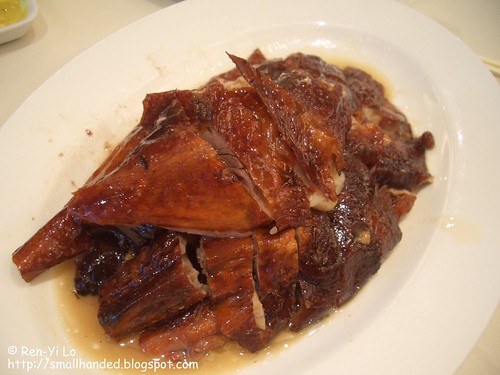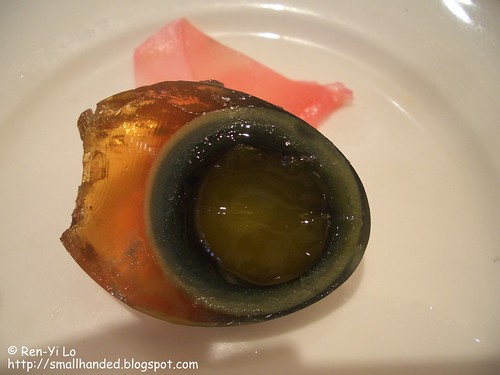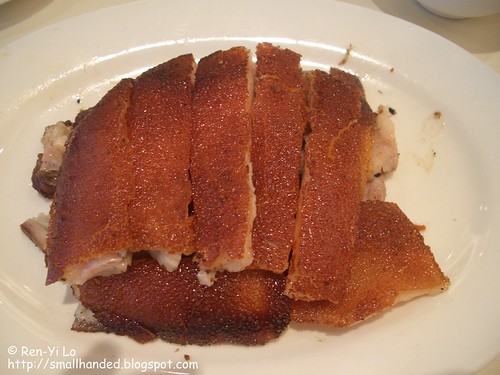The restaurant most famous in Hong Kong for this Cantonese treat is Yung Kee. This restaurant fills up very quickly, since locals and tourists both eat here during lunch and dinner. It is best to try to beat the crowd or make a reservation.

The roast goose's meat was nice and juicy, due to the goose's fatty skin. Roast goose differs from roast duck in its meat texture by being richer and meatier, not necessarily fattier. The skin was perfectly roasted and had a nice, bold color, complementing the meat's rich texture. Accompanying the goose was a sweet plum sauce, that had a touch of tartness. This complemented the rich taste of the meat well, without overpowering the flavor of the goose itself. When tasting the goose, it did not crisp or crunch, meaning it was not over-roasted and dried out. Instead, it was succulent and tender, well-seasoned, and showcased a whole-bodied flavor due to the meat's juices and natural fats. For those who shy away from oily foods, roast goose is not a good choice.
To start off our lunch extravaganza, we had their famous preserved duck eggs [pídàn 皮蛋] as an appetizer. Sometimes also known as century eggs, these duck eggs undergo an interesting process to attain their distinct, but smooth, flavor. These special eggs deserve a separate blog post sometime in the future. There are various ways to eat them, but Cantonese typically enjoy these eggs with some pickled ginger, perhaps to cleanse the palate after enjoying a bite of this egg and to neutralize the alkaline pH levels of this product. At Yung Kee, this appetizer is order per person--half a duck egg to a person.

In addition to the roast duck, we ordered suckling pig, which is similar to the roast pork with crispy skin. The major difference is that the pig chosen is younger, meaning the meat is more tender and softer. The skin is also thinner and tends to be crisper, when roasted properly. The smoother skin of a younger pig also has a smaller layer of fat. Served with hoisin sauce, it is a wonderful experience for all the senses. The perfectly roasted skin, colored to a golden-brown, covers the succulent, pale white meat. Together with the sweet and salty smell of the dark hoisin sauce that accompanies this meat, it gives a satisfying crunching sound when tasting it for the first time.

To accompany these barbecued meats, a bowl of rice or noodles is appropriate. I opted to select a Yung Kee special called lai fun. These are made from scratch each day at the restaurant and have a few unique properties. Lai fun are noodles made of rice flour and look identical to Italian spaghetti, because they are smooth and cylindrial with ends that are straight. Their texture differs from pasta by being lighter and less chewy (think: not "al dente" with pasta). Similar to other rice noodles, they have a smoother surface. These were served in a delicate soup broth, topped with some young, green scallion.

Yung Kee [鏞記] . 32-40 Wellington Street . Central . Hong Kong
Reservations strongly recommended.

No comments:
Post a Comment